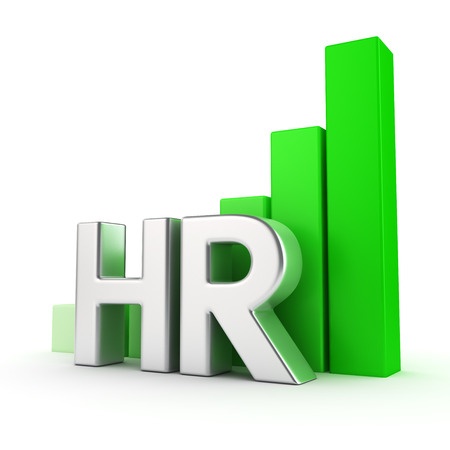The latest Talent Forecast from Korn Ferry’s Futurestep division found that in today’s candidate driven market, hiring professionals are most likely to measure their success in three key areas:-
- Time to hire
- Retention of new hires
- Performance of new hires after 18 months
How does your business measure up?
Time to hire : The most important hiring metric?
Your time to hire is perhaps the most important metric in understanding what’s preventing you from sourcing talent. Slow hiring jeopardises your ability to source talent. The top 10% of qualified candidates disappear from the job market within 10 days. To capture the attention of that talent, your hiring process has to be streamlined, rapid, measured and effective. Recruitment analytics in HR software will confirm the average time it takes your hiring team to fill an open job, from the point of posting your vacancy to the day your new employee starts work. Without clarification on that key metric, filling vital roles is likely to be a problem for your business. More detail on how to analyse and improve the length of each step in your hiring process is provided in our previous article on time to hire.
Retention : Staff retention is one of the biggest issues facing employers this year
Retention of new hires is a significant issue for 90% of business leaders as it is estimated that up to one in four hires leave their jobs within the first six months. The impact of an early departure is not only disruptive and costly for your organisation; a stream of short lived new hires also affects staff morale. Take steps to resolve this issue if you recognise your own hiring practice in the following:-
- You make a decision on candidate hire within one minute of meeting them at interview, rather than incorporating evidence based HR into your final candidate selection.
- You make promises, related to career development or flexible working for example, tduring the interview that you can't keep or offer unrealistic expectations of the job and your company.
- Your onboarding process is ineffective. If your recruitment data confirms a consistent pattern of early departures, part of the problem may lie in how you onboard your new hires.
Improving retention and staff performance
Creating an effective employee experience was identified by Deloitte as one of the top ten global talent trends affecting employers in 2017 and considered vital to engaging with and retaining new staff. In addition to the steps necessary to achieve a positive employee experience the following strategies should be considered:-
Be realistic in candidate selection
If your ideal candidate faces a lengthy daily commute to the office, it will eventually take its toll. A new study from Britain’s Healthiest Workplace suggests that employees who face an hour long commute or more each day are less productive and more likely to develop health related issues. Employees with the longest commute are also a third more likely to experience depression. Long commutes (two hours or more) increased by almost in the third in the past five years with 3.7 million workers travelling two hours or more every day. As dismissive as your prospective hire may initially appear over your concerns over their commute it will inevitably take its toll on both productivity and performance over time. Be realistic when it comes to regular long distance travel and ensure flexible or remote working is available to your employees.
Workplace apathy
Nearly half of all UK workers are bored in their jobs, according to CV Library. Apathy at work impacts productivity and performance as well as the retention of your new hires. Take steps to address this issue as soon as possible, for example:-
- Have career conversations. Less than half of all employees have regular contact with a member of HR, ultimately creating a disconnect and potential mistrust.
- Review your screening processes. It’s estimated that one in three workers is in the wrong job and just one unhappy staff member can cost your business up to £16,000. HR analytics enables you to rapidly evaluate the source of your most successful hires.
The impact of poor leadership
A new study from Glassdoor found that one in five employees leave their jobs because of their boss’s attitude. ‘Disrespectful’ behaviour and a negative attitude were the primary reasons given for employee unhappiness with their managers, resulting in absenteeism, sick leave or in some cases simply leaving without notice of explanation. A negative or toxic culture affects your staff retention levels and their performance. The CIPD has previously described the CEO pay gap as evidence of a ‘shocking disconnect’ in the workplace.
Korn Ferry noted the lack of candidates with leadership potential as the number one factor in the talent shortage but its impact goes beyond recruitment. Inspirational leadership engages your workforce, improves the retention of new hires and motivates your staff to perform.
How does your hiring process measure up? Advorto’s world class software provides insight into what’s really happening and helps you to hire better people faster.
Contact us today to start your 30 day free trial.
You might also like to read:-






